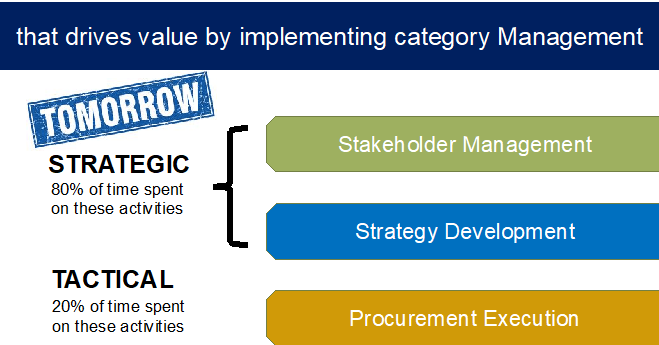As we migrate from a backdrop of recent economic pressures to the rosier outlook of 2015 and beyond, it is vital that effective procurement practices are not forgotten but instead implemented at every available opportunity. In recent times, most businesses ‘cut their cloth’, drastically reducing overhead costs so as to survive. These practices should continue to ensue profitability is maximised as the Economy grows over the next 12 months.
While considering your Procurement Objectives for 2015, take note of the following cost-saving and value-generating Procurement Recommendations;
-
Invest time in Effective Contract Management
With expected growth and expansion across most organisations, no better time exists to invest resources in effective contract management. With the arrival of new employees, new customers, new processes, new office/site/store locations, new technologies and new suppliers, it is paramount that contracts are correctly managed to mitigate risks while taking advantage of procurement opportunities. While trawling through complex documents is a time-consuming exercise, the greater visibility and understanding of goods/services bought, will lead to significant savings opportunities when armed with accurate information. In its most simplest form, effective contract management is priceless when renegotiating contracts with existing suppliers based on larger volumes or while extending favourable contract terms to new locations.
-
Invest money in New Technologies
Heraclitus was probably talking about Information Technology in c. 500 BC when he said “the Only Thing That Is Constant Is Change”. We are all striving to keep up-to-date with the Internet of Things, Big Data, 3D Printing, the wireless connected world and the explosion of mobile plus wearable devices. Companies are being dragged along on this journey by workforces that are tech-savvy, globally aware and demanding of flexibility in their lives. So whether your IT investments are forced externally (by the likes of Microsoft licenses expiring) or internally from the previously alluded to demanding workforce, when investing money in New Technologies in 2015, ensure;
-
Information security, risks and vulnerabilities are addressed by all service providers as transactions will be mobile, remote and over unsecured public networks.
-
Consolidation is key when replacing legacy systems, operations and processes; leading to reduced administration, training, support, vendor management etc.
-
Do not forget the purpose of the IT change. Technology features often distract from the core business so ensure the solution fits your business, enhances your processes while providing greater transparency and business insights than available before.
-
Invest with Others [Group Buying]
Since the Stone Age, multinational businesses have benefited from central procurement contracts across some (not all) spend categories. With increased buying power, better prices can be negotiated plus the added benefit of buyer expertise for each category. Similarly, group buying ensures all businesses can be orchestrated into consortia that are responsible for sourcing and managing aggregated contracts on behalf of a discrete group of companies. In fact, this was the first step undertaken by the Office of Government Procurement (OGP) when formed in Ireland in 2013. As with the success of all Procurement activities, ensure quality and performance are paramount as a criterion, not just price, when making final selections, while the following commodity categories should be considered when Group Buying;
-
Utilities: electricity, gas, oil and telecoms
-
Common Services: training, health & safety, professional services etc.
-
Delivery related purchases: stationery, workwear, H&S products, logistics, document storage etc.
-
Facilities Management: cleaning, security, lift/alarm/fire maintenance, landscaping etc.
-
Divest from higher cost economies
With economies springing back to pre-2008 statuses, increases in wages, operating costs, prices and inflation will follow. Therefore, when the business case exists, it makes sense to globally source specific products and services from lower cost economies. Undoubtedly significant due diligence needs to be undertaken when sourcing such suppliers but ‘stand on the shoulders of giants’ and utilise the expertise from global online marketplaces, niche third-party sourcing companies plus trade bodies such as Asia Trade Forum, Enterprise Ireland, European Enterprise Network, the Ireland-India Business Association etc.
-
Avoid investing in long-term energy contracts
Energy prices should be at there lowest point in over a decade after crude oil prices more than halved and wholesale gas prices dropped by 27% in the past year. Driven by a global reduction in demand plus gas producers need to relinquish excess Crimea-related stock, energy prices are expected to continue to tumble for the foreseeable future. Businesses throughout the country should be considering variable pricing coupled with shorter-term contracts, to maximise the benefits derived from lower energy prices. We have seen client’s Energy prices drop by 12% in 2014, ensure your business achieves similar discounts in 2015.
Additionally, many companies have prospered by following the advice of Tom Peters, the US management consultant, who encouraged businesses to “do what you do best, outsource the rest”. This unrelenting focus on core competencies provides repeatable and scalable returns for organisations that make that commitment. While outsourcing non-core and distracting activities will drive growth, profitability and success. Have you identified core and non-core activities within your business?
Finally, feel free to share your Procurement Objectives for 2015 with Arvo as we would be delighted to help you;
-
Improve the effectiveness of your purchasing capabilities
-
Reduce the administration associated with your purchasing activities
-
Enhance your purchasing techniques by introducing world-class eProcurement technology
-
Identify significant bottom-line savings to drive profitability for your business in 2015




